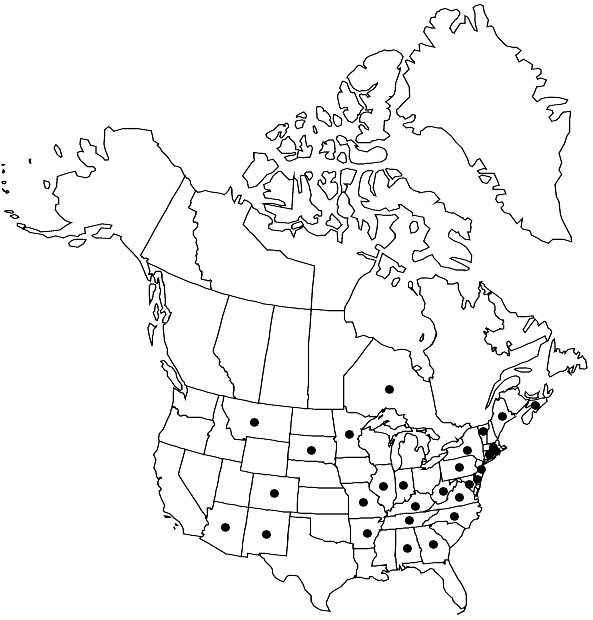Grimmia pilifera
Prodr. Aethéogam., 58. 1805,.
Plants in robust, loose tufts, dark olivaceous to black. Stems 1–4 cm, central strand absent. Leaves narrowly lanceolate from an ovate base, 2–4.5 × 0.4–0.8 mm, keeled, both margins recurved proximally, often narrowly, sheathing, awn 0.2–0.6(–1.5) mm, costal transverse section prominent, usually semicircular; basal juxtacostal laminal cells short-rectangular to linear, sinuose, thin transverse and thick lateral walls; basal marginal laminal cells quadrate to short-rectangular, straight to sinuose, thick transverse and thin lateral walls, hyaline; medial laminal cells quadrate to short-rectangular, sinuose, thick-walled; distal laminal cells 2-stratose, not bulging, marginal cells (2–)3(–4)-stratose, not bulging. Sexual condition dioicous, perichaetial leaves not enlarged. Seta straight, 0.5–1 mm. Capsule occasionally present, immersed, yellow, oblong-ovoid, exothecial cells quadrate to short-rectangular, thin-walled, stomata present in 2–3 rows, annulus of 2 rows of rectangular, thick-walled cells, operculum long-rostrate, peristome present, fully developed, perforate in middle, split in distal half.
Habitat: Exposed to tree shaded, dry limestone, sandstone and granite
Elevation: low to high elevations (60-2300 m)
Distribution

N.S., Ont., Ala., Ariz., Ark., Colo., Conn., Del., Ga., Ill., Ind., Ky., Maine, Md., Mass., Minn., Mo., Mont., N.J., N.Mex., N.Y., N.C., Pa., R.I., S.Dak., Tenn., Vt., Va., W.Va., Mexico, Asia.
Discussion
Grimmia pilifera is most commonly found in the Appalachian Mountains from Nova Scotia to New York and south to northern Georgia and Alabama. It extends into the Midwest on the Ozark Plateau northward to southern Illinois and Indiana. It is rare in western North America, being found in mountainous areas in southeastern Arizona to the Rocky Mountain Front Ranges of New Mexico and Colorado, with disjunct sites in Montana, western South Dakota, and Minnesota. It occupies a broader range of habitats than does either G. longirostris or G. arizonae in that it is common on limestone and sandstone, as well as granites, in shaded as well as exposed sites, and at much lower elevations throughout much of its range, while still reaching the alpine in Colorado. Grimmia pilifera is most closely related to a group that includes G. longirostris and G. arizonae. Its lack of a central strand, and its leaves with a small, well-defined ovate base recurved on both margins, which are also distinctly thick, will separate it from G. arizonae.
Selected References
None.